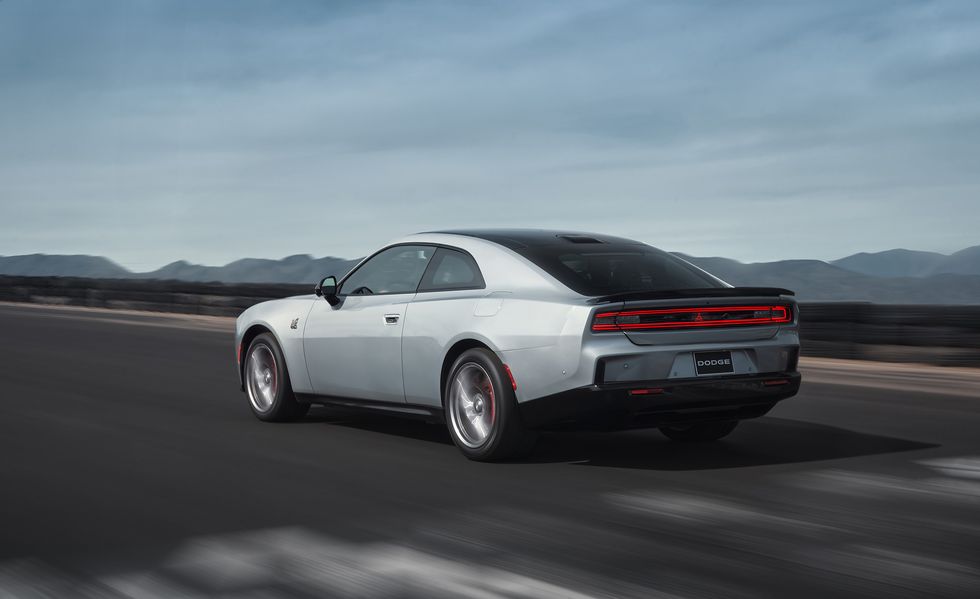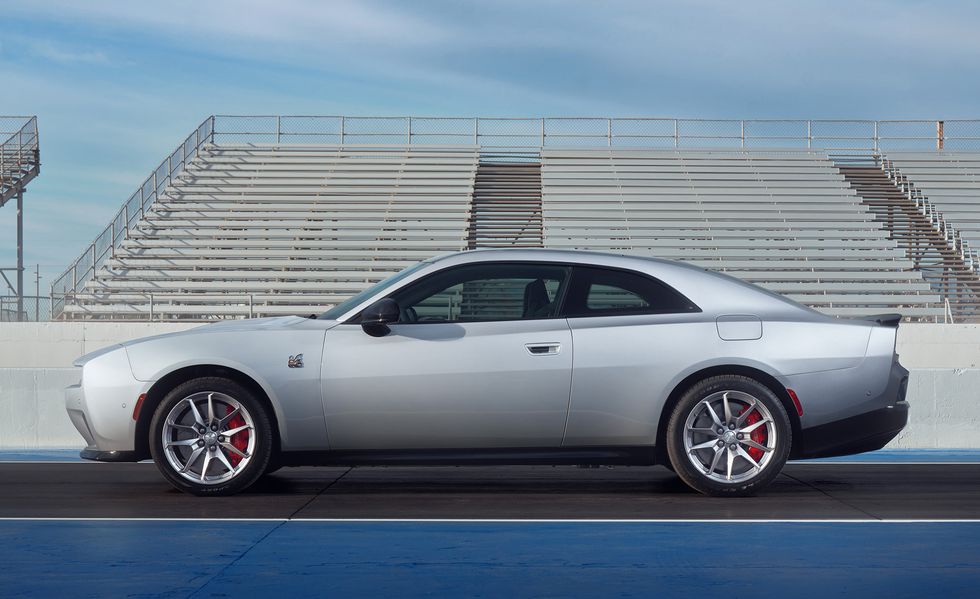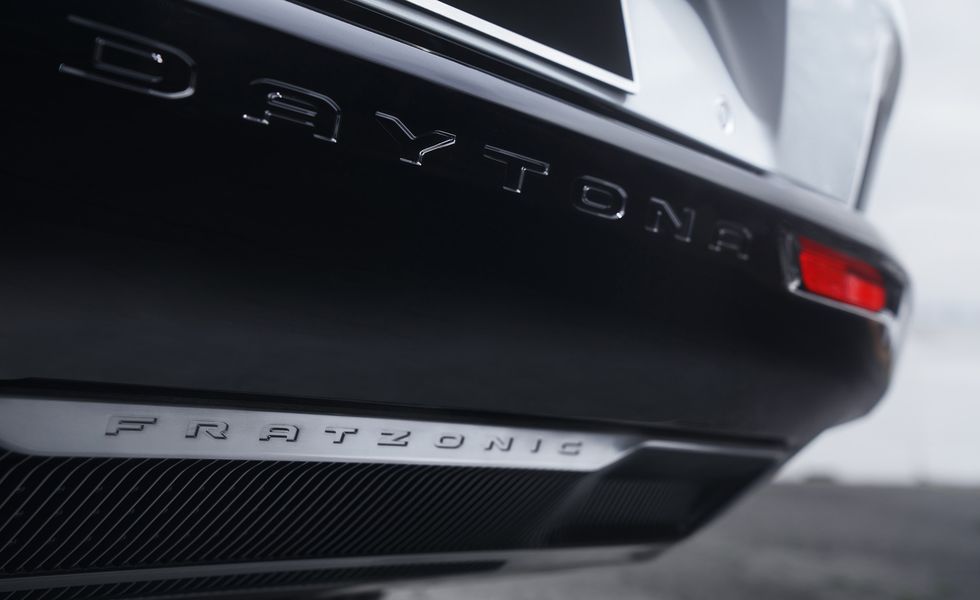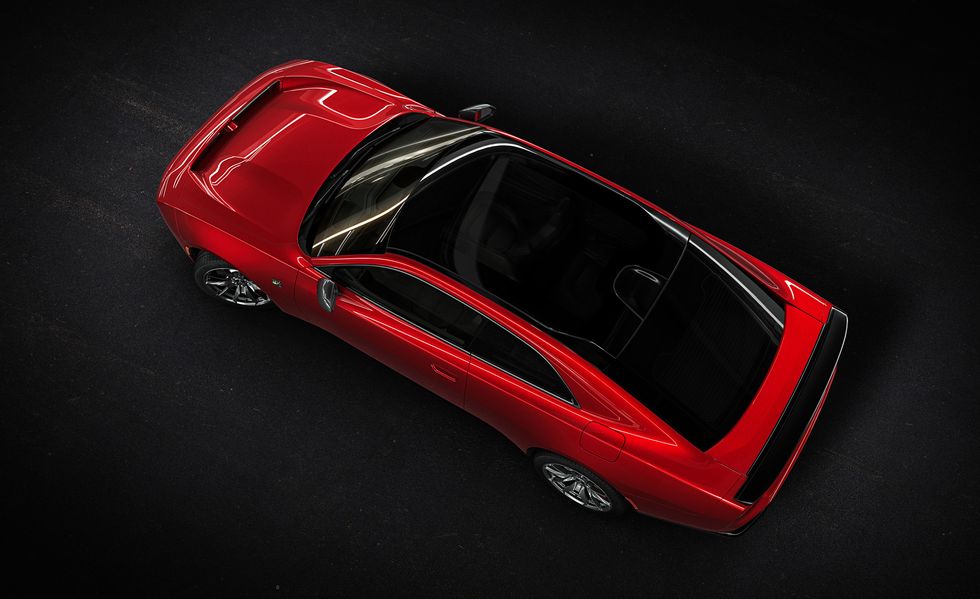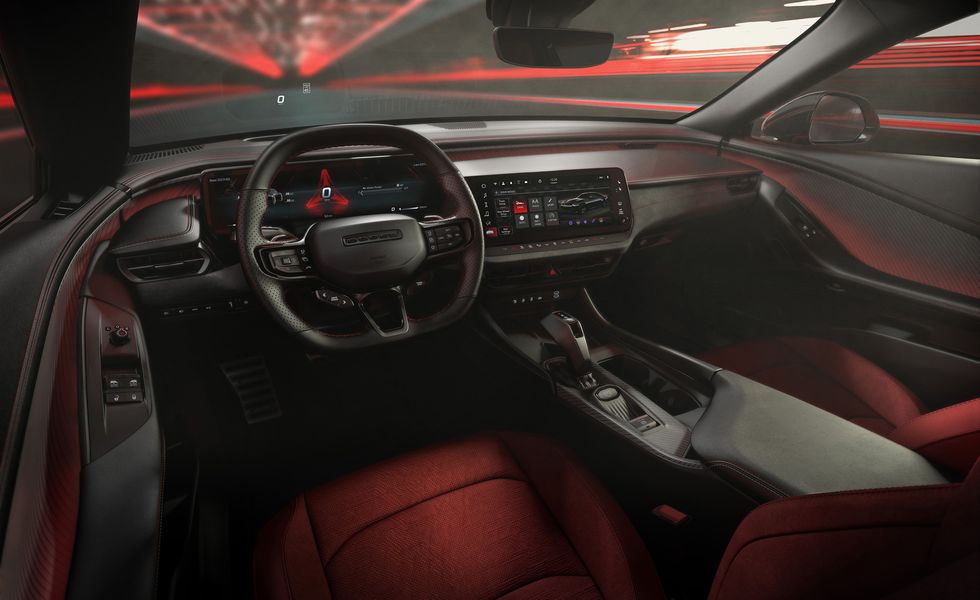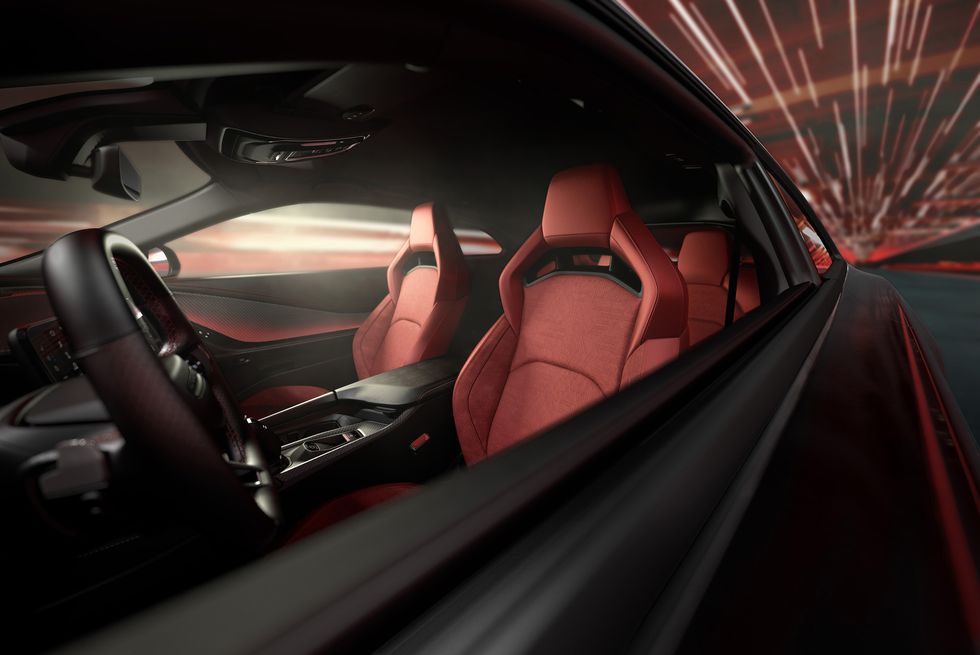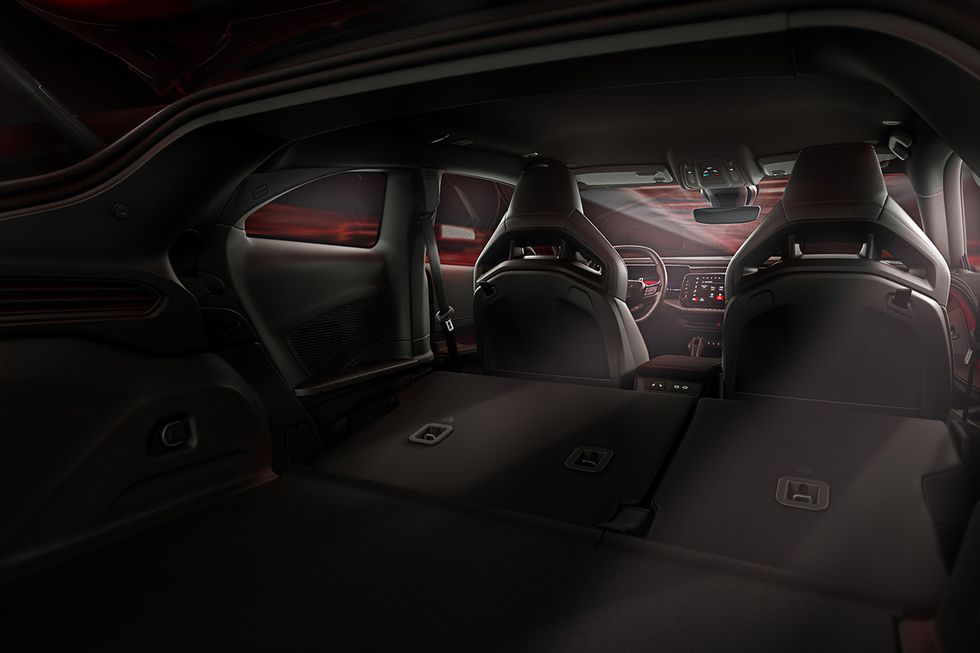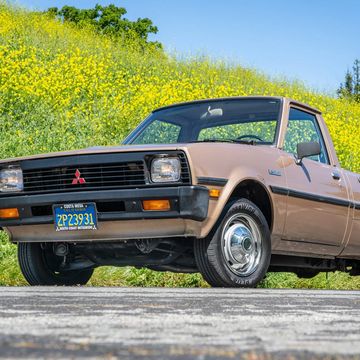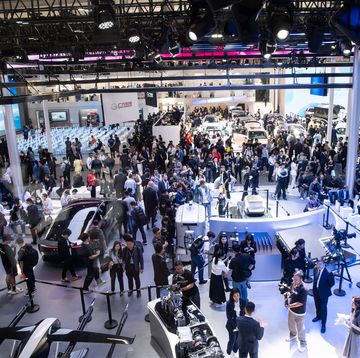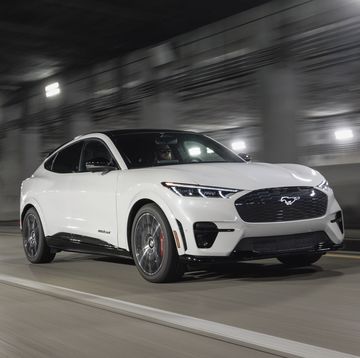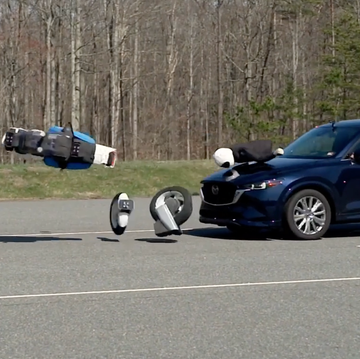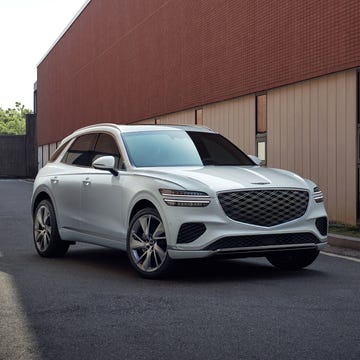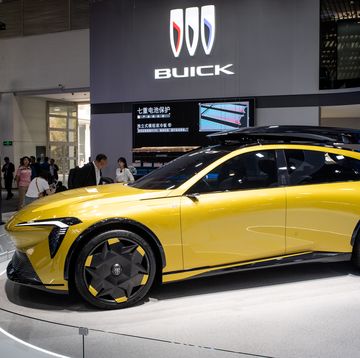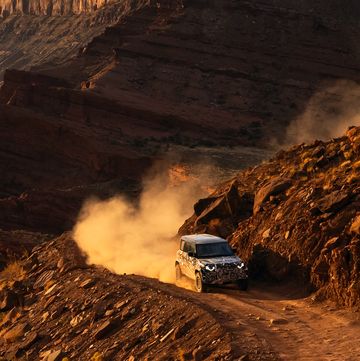- The 2024 Dodge Charger Daytona represents the birth of the electric muscle car.
- Dodge's first EV debuts with a two-door body style, standard all-wheel drive, and two trims: the R/T with up to 496 horsepower and the Scat Pack with up to 670 hp.
- The Charger EV has a 400-volt architecture with a 93.9-kWh battery; Dodge is targeting 317 miles of range for the R/T and 260 miles for the Scat Pack.
Just because Ford slapped the Mustang logo on an electric vehicle doesn't mean it's the first EV muscle car. To the contrary, the Ford Mustang Mach-E is an SUV that appeals to the masses. Sure, it offers impressive performance, but the Mach-E has more in common with the Ford Explorer and F-150 Lightning than the pony car that inspired its name. Meanwhile, the Chevy Camaro is MIA, with no word on its future as an EV or otherwise.
That leaves the garage door open for Dodge, which has retired its famous Hemi V-8s for good and now looks to reinvent the muscle car. It's doing that with a new electric Charger that sets the brand on a different trajectory while still maintaining an atypical approach. What does that mean? Well, as Dodge CEO Tim Kuniskis describes it, EVs are meant to be green and politically correct, but the 2024 Dodge Charger Daytona is not.
The company's first electric vehicle was designed around the muscle-car ethos, putting performance and horsepower ratings ahead of efficiency and range estimates. That will be obvious when the first examples go on sale this fall. As Kuniskis put it during a media backgrounder before the reveal, "This is still the quickest and most powerful muscle car you can buy at launch."
Electric Chargers
For the 2024 model year, the Charger will only be available with an electric powertrain, which going forward applies to models with Daytona in their name. Every Charger uses the modular STLA Large platform, but the Daytona features a 400-volt electrical architecture. Next year, Dodge will introduce a max-performance SRT Banshee model with an 800-volt system and a two-speed transmission as well as Chargers with an internal-combustion engine. The latter "Sixpack" variants will use Stellantis's Hurricane twin-turbocharged 3.0-liter inline-six, but here we're focusing on the EV Chargers.
The '24 Charger Daytona lineup will only be offered with a two-door body style; a four-door version is coming next year (more on that later). The familiar R/T and Scat Pack trim levels carry over from the outgoing generation. Both will have dual electric motors that provide standard all-wheel drive. The R/T will debut with up to 496 horsepower and 404 pound-feet of torque, and the Scat Pack will arrive with up to 670 horses and 627 pound-feet. However, those standard power peaks only apply to 2024 models, as every R/T comes with Dodge's Direct Connection Stage 1 package worth 40 horses; the Scat Pack has a Stage 2 kit worth 80 ponies. Next year, those will be optional and cost extra, so each car's base-level output will be lower.
To unlock the Daytona model's peak power, there's an overboost function called "Power Shot" that enables a 40-hp spurt for up to 15 seconds. Dodge says that while there's a 30-second delay between Power Shot activity, it can be used unlimited times until the battery runs dry. With a 93.9-kWh usable capacity, Dodge estimates the battery will deliver EPA-rated ranges of 317 miles for the R/T and 260 miles for the Scat Pack.
Along with an 11.0-kW onboard charger, the Daytona models offer a peak charge rate of 183 kilowatts when plugged into a 350-kW DC fast-charger. That connection is claimed to take the battery from 20 to 80 percent state of charge in about 28 minutes.
Performance Chargers
The biggest hurdle ahead of Dodge is convincing its loyal fans and others that an electric Charger is a better Charger. Giving it a big horsepower boost is a good start. The last V-8-powered Charger R/T had a 370-hp Hemi 5.7-liter, and the Scat Pack had a Hemi 6.4-liter with 485 ponies. Even without the Power Shot, their electric replacements still exceed those power figures.
The electric Chargers will be notably quicker than their predecessors too. Dodge claims the Daytona R/T will hit 60 mph in 4.7 seconds, and the Scat Pack model will do it in 3.3 seconds. At the drag strip, Dodge claims the duo will complete the quarter-mile in 13.1 seconds and 11.5 seconds, respectively. A 2019 Dodge Charger Scat Pack we tested hit 60 mph in 3.8 seconds and finished the quarter-mile in 12.2 ticks at 115 mph. The EVs' top speed is the only letdown, as the R/T is limited to 137 mph and the Scat Pack is capped at 134 mph.
Of course, electric cars are inherently quicker thanks to their instantaneous torque. However, their quickness is usually offset by equipment that's aimed at maximizing efficiency. Dodge does the opposite with the Charger Daytona, prioritizing parts that improve performance despite their effect on efficiency. For example, not only are a set of wide 275-section-width tires standard, but the Scat Pack's available Track Pack includes even wider and stickier rubber, specifically Goodyear Eagle F1 Supercar summer tires, measuring 305/35ZR-20 up front and 325/35ZR-20 rear.
Dodge says all 2024 Charger Daytonas get the Track package's upgraded Brembo brakes, which feature huge 16.1-inch rotors all around. The two-piece front discs are clamped by fixed six-piston calipers, and the rears are pinched by four-piston units. The brake-by-wire system blends the friction brakes with the regenerative system that provides three different levels of regen.
The Daytona models also have a selection of drive modes, but Scat Pack models get the best ones. Along with launch-control and line-lock functions, the top trim has Drift and Donut modes, which are pretty self-explanatory (so, yes, it can do a proper burnout). There's also Race Prep mode for the drag strip or the racetrack, which is designed to heat or cool the battery depending on the intended use. The Track Pack also includes a performance data recorder that lets users log video and other data.
The big question regarding the new electric Chargers that most people probably have on their minds is, How does it sound? Your guess is as good as ours, as Dodge says it's still fine-tuning its "Fratzonic Chambered Exhaust." Utilizing two passive radiators, the system provides real-time feedback (meaning you can rev it) and is said to match the sound levels of the current Hellcat Charger, capable of a claimed 126-decibel roar. For those who don't like the idea of a synthetic soundtrack, the Fratzonic setup can also be turned off with Stealth mode.
Charger Daytona: Inside and Out
When it comes to the look of the new Charger, Dodge did a funny thing. Not only did the company clearly draw inspiration from the popular second generation (1968–1971), but it also hewed so closely to the concept that was revealed over a year ago that the production version has basically been hiding in plain sight. Many distinctive details remain, such as the "R-Wing" that creates a pass-through opening at the front for improved downforce. It's also exclusive to Daytona models.
What's not exclusive to the electric Dodge Charger Daytona is the rear hatchback that helps make it more practical. There's 23 cubic feet of cargo space behind the rear seats, and that expands to 37 cubes with the rear seats stowed. Plus, the frunk provides an extra 2 cubes. For comparison, the outgoing Charger offered 17 cubic feet of space in its trunk. Unlike its predecessor, the new Charger comes with either two or four doors—that's one surprise the concept didn't spoil.
Dodge says the two- and four-door Charger Daytona share a 121.0-inch wheelbase, which is an inch longer than before. The two-door model measures 206.6 inches long overall, spans 79.8 inches wide, and stands up to 59.0 inches tall. Those dimensions make the new car roughly 5.5 inches longer, about 1.5 inches wider, and an inch or so taller. With a claimed 5838-pound curb weight, the electric Charger is roughly 1500 pounds heavier than its V-8 predecessor. However, we'll have to get one on our scales to verify that.
The Charger Daytona's interior is also very similar to the concept's. The dashboard features free-standing displays that include either a 10.3- or 16.0-inch digital gauge cluster and a 12.3-inch center touchscreen. The latter uses the familiar Uconnect5 software with wireless Apple CarPlay and Android Auto. There's also a digital key option and a smartphone app that provides remote access to apps and vehicle functions.
While the Charger Daytona's squared-off steering wheel likely won't appeal to everybody, we did dig the return of the pistol-grip-style shifter. Other available features include a head-up display, an 18-speaker Alpine sound system, a fixed panoramic sunroof, and ambient interior lighting that's entertainingly referred to as "Attitude Adjustment." The R/T makes do with a mix of cloth and vinyl upholstery and different front seats than the leather-covered ones that are available with certain packages.
Dodge hasn't said how much the 2024 Charger Daytona models will cost, but we expect the R/T's base price to be above $60,000 when it goes on sale this fall. The cars will be built at the company's Canadian factory in Windsor, Ontario. Both EVs will only be eligible for the U.S. federal tax credit through lease incentives.
Eric Stafford’s automobile addiction began before he could walk, and it has fueled his passion to write news, reviews, and more for Car and Driver since 2016. His aspiration growing up was to become a millionaire with a Jay Leno–like car collection. Apparently, getting rich is harder than social-media influencers make it seem, so he avoided financial success entirely to become an automotive journalist and drive new cars for a living. After earning a journalism degree at Central Michigan University and working at a daily newspaper, the years of basically burning money on failed project cars and lemon-flavored jalopies finally paid off when Car and Driver hired him. His garage currently includes a 2010 Acura RDX, a manual '97 Chevy Camaro Z/28, and a '90 Honda CRX Si.

